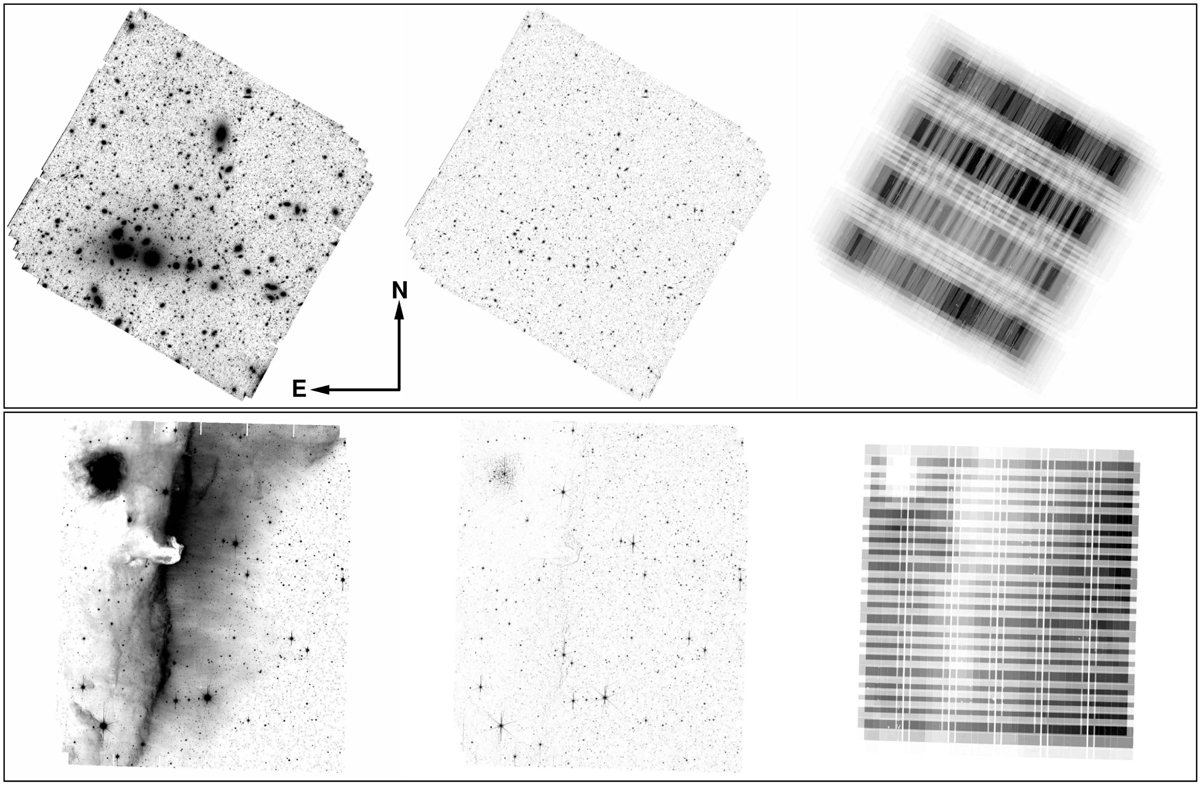Fig. 16

Download original image
Top: (left to right) ERO Perseus cluster in the HE-band (full FoV of 0.70 deg2) showing the extended emission stack, compact-sources stack, and weight map (all in inverted scale). Bottom (left to right): ERO Horsehead Nebula in the IE-band (full FoV of 0.59 deg2) showing the extended emission stack, compact-sources stack, and weight map (all in inverted scale). All ERO fields are rotated to deliver a standard equatorial projection where north is up and east is to the left. The main difference between the two types of stacks (center versus left) is the suppression of extended emission in the compact-sources stack to optimise compact source photometry. The two flavours of stacking are motivated by the need to optimise the photometry for each class of objects (it is not recommended to use the extended-emission stacks for compact-source science). The weight maps echo the observing strategy, with a S/N that can vary greatly across the image. This is particularly striking on the bottom right, based on a standard Euclid observing sequence.
Current usage metrics show cumulative count of Article Views (full-text article views including HTML views, PDF and ePub downloads, according to the available data) and Abstracts Views on Vision4Press platform.
Data correspond to usage on the plateform after 2015. The current usage metrics is available 48-96 hours after online publication and is updated daily on week days.
Initial download of the metrics may take a while.


